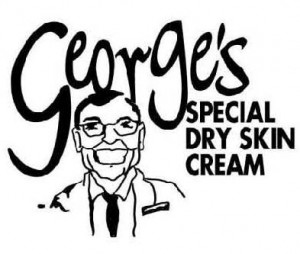What’s in a cream we apply a range of moisturizing, anti-ageing, cellulite and other creams to the face and body. Although these creams may differ in terms of their components, all are based on a stable emulsion that supports the active ingredients in the product. Here’s how to identify active ingredients on the cream’s label.
A cream’s action is determined by the active ingredients, which are the basis on which a product is labelled and advertised. Most important of all, however, is the “base” emulsion that acts as a support for these ingredients. The base is composed of two immiscible liquids (water and oil or silicones), with one distributed in the other in the form of tiny droplets stabilized by a third component, the emulsifying agent.
The properties of creams vary depending on the emulsifiers and proportions used: lighter creams for younger normal skin; oil-rich creams for dry, damaged or aged skin; creams that are more or less easily absorbed; creams with a dry or oily texture. The base emulsion will moisturize more or less depending on its content in humectant and emollient agents.
To prepare an emulsion the aqueous and oil phases are heated separately. Once a suitable temperature is reached, the two phases are mixed by constant stirring and cooled to room temperature. Active ingredients that do not support high temperatures are added towards the end of the process, along with a fragrance.
The labels for cosmetic products list a wide variety of basic components. Some of these components are listed below.
Aqueous phase:
AQUA
This is the diluent of the aqueous part of the emulsion that dissolves all the hydrosoluble active ingredients.
CARBOMER, LITHIUM MAGNESIUM SODIUM SILICATE, ALUMINUM STARCH OCTENYLSUCCINATE, SODIUM ACRYLATES COPOLYMER, AMMONIUM POLYACRYLATE
These ingredients gel the aqueous phase to prevent phase separation, enhance viscosity and stabilize the emulsion.
Oil or silicone phase:
PARAFFINUM LIQUIDUM, CAPRYLIC/CAPRIC GLYCERIDES, ISOHEXADECANE, ISOPROPYL MYRISTATE, CYCLOPENTASILOXANE, DIMETHICONE
These emollient liquids prevent transepidermal water loss by forming a protective film on the skin.
CETEARYL ALCOHOL, ARACHIDYL ALCOHOL, BEHENYL ALCOHOL, CETYL ALCOHOL, MYRISTYL ALCOHOL, STEARYL ALCOHOL, PALMITIC ACID, STEARIC ACID
These waxy-fatty solid substances, usually alcohols or fatty acids, stabilize and add viscosity to emulsions. They also confer nice sensorial properties by partially adhering to the skin surface.
Fat-soluble active ingredients are added to formulations in this oil phase.
Emulsifiers:
POLYSORBATE 80, PEG-100 STEARATE, CETEARYL GLUCOSIDE, LAURETH-7
The function of the emulsifiers is to combine the aqueous and oil phases in a single-phase, stable, homogeneous system. Different emulsions are obtained depending on the type of emulsifier used.
Preservatives:
BENZOIC ACID, CHLORPHENESIN, PHENOXYETHANOL, METHYLPARABEN, ETHYLPARABEN, BUTYLPARABEN, PROPYLPARABEN, ISOBUTYLPARABEN, BENZYL ALCOHOL, IMIDAZOLIDINYL UREA, SODIUM BENZOATE, DISODIUM EDTA
These ensure that the cosmetic product remains microbiologically safe during storage and when in use.
Other ingredients:
PARFUM
This indicates that the formula has a fragrance that personalizes the cosmetic product. The fragrance is crucial, as a consumer’s choice of brand often depends on this one ingredient. If a fragrance contains any of 26 official skin allergens on a European Commission list, in a proportion of more than 0.01% of the cream, the ingredient must feature on the label.
ALPHA-ISOMETHYL IONONE, BENZYL SALICYLATE, BUTYLPHENYL METHYLPROPIONAL, CITRONELLOL, HEXYL CINNAMAL, LIMONENE, LINALOOL
Examples of allergens that may be included in cream labels.
CITRIC ACID, SODIUM HYDROXIDE, TRIETHANOLAMINE
These enable the pH of the final product to be adapted to the natural skin pH.
CI: 12010, CI: 47005, CI: 73000
These are examples of permitted colorants that customize the appearance of creams. Labels show the COLOUR INDEX (CI) number.